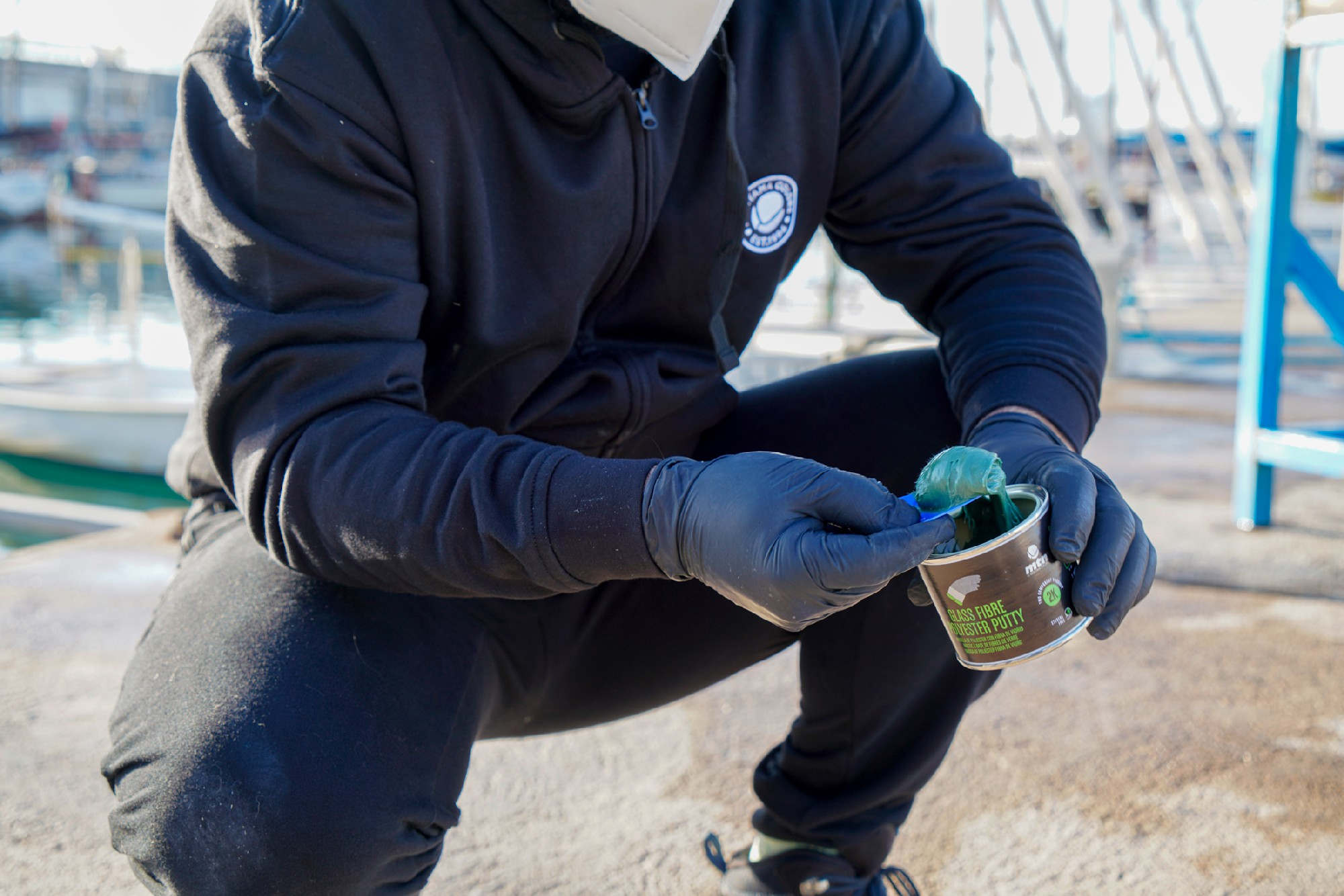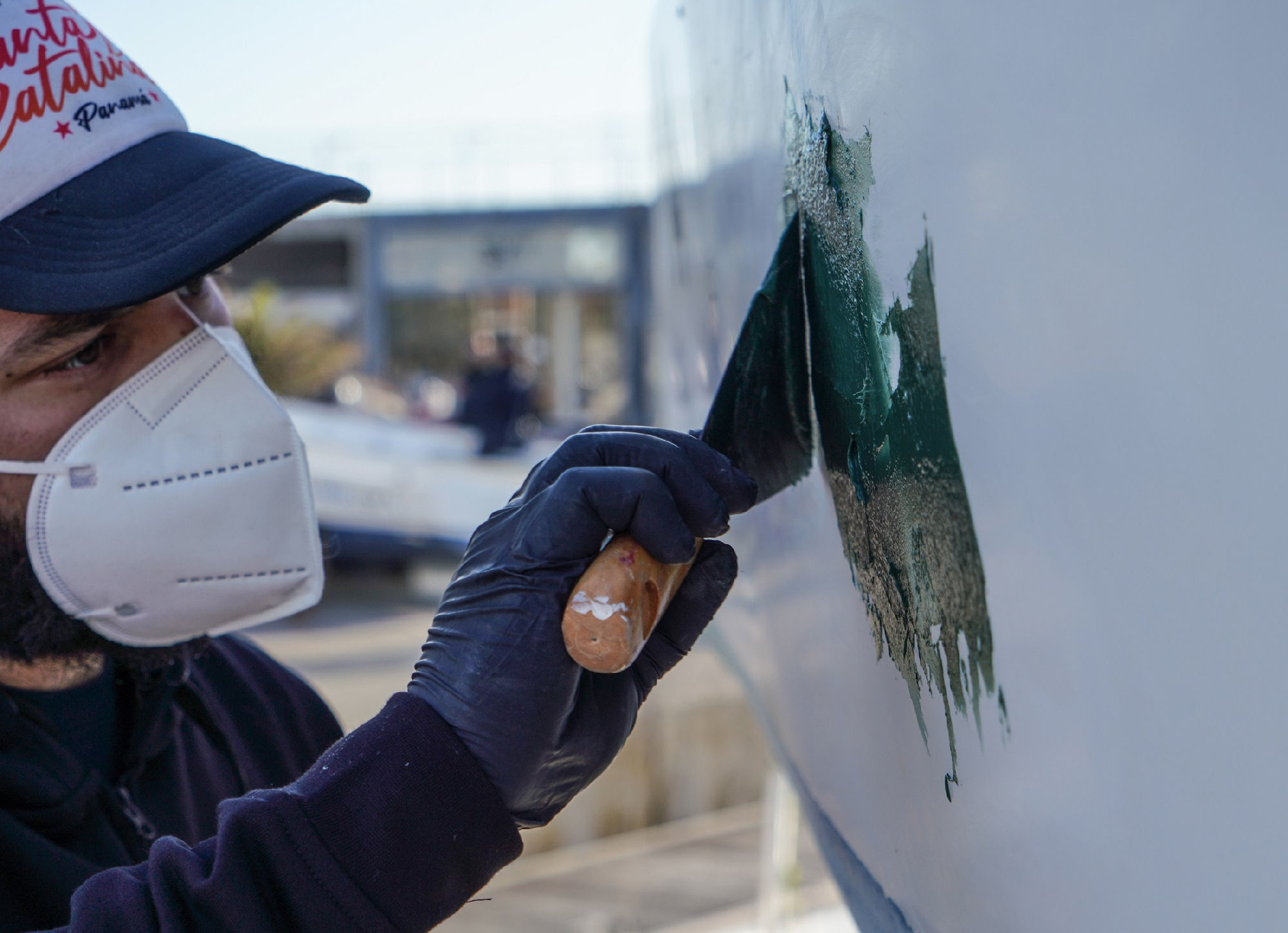- About MTN
Would you like to stay up to date on the latest MTN world news? Products, graffiti, murals, festivals, art and much more.
Return MTN Putties: What Are They and What Are They For?
You will find them sold next to MTN PRO sprays, but only because they are used to supplement other aerosol products. In this sense, MTN putties are specifically designed for the best results when repairing and restoring all types of items.
Putty is a doughlike material that hardens when it dries. It is used to fill gaps or join surfaces and plays a fundamental role in the repair of deep scratches, dents and flaws in different materials. It is so versatile that it may be used as a putty filler for wooden or metal objects.
However, despite its versatility, it should be noted that different characteristics will work better for certain types of flaws and surfaces. For this reason, Montana Colors offers two different types of putty: universal polyester putty and fiberglass putty.

WHAT ARE THEY EXACTLY AND HOW ARE THEY DIFFERENT?
Universal polyester putty is a 2K putty used on steel, aluminum, polyester and carbon fiber, wood, painted objects and more. Its characteristics make it an ideal product for evening the surfaces of all types of material, as long as the flaws are not too deep.
This putty may be used on walls, although it was designed specifically for more highly technical and demanding types of repair. In this sense, it may be used to fill cracks in walls or concrete when a quick solution is urgently needed.
Before painting over it, we recommend smoothing its finish with MTN PRO Grey Filler Primer.
Polyester fiberglass putty is formulated to provide extra consistency when larger amounts are used. For this reason, this type of putty is used to repair deeper flaws and to fill bigger gaps. Due to the nature of its composition, we recommend smoothing its finish with universal polyester putty for a more uniform surface. It may be used to repair items made from polyester composites and as putty to fill gaps in rusted iron.
*Note: Do not apply to thermoplastic finishes such as plastics found in automobiles, or phosphating primers, as its anchorage may be compromised.
HOW IS IT USED?
The instructions for the correct use of both putties are practically the same:
- Prepare the surface by sanding and degreasing, as both putties can be applied directly to the material.
- Mix thoroughly two parts of the catalyst for every 100 parts of the putty, being careful not to use too much of the catalyst. You will have between 3 and 11 minutes to handle the putty before it dries, depending on the ambient temperature.
- Let it dry for 15 to 40 minutes, depending on the ambient temperature.
- Sand first with P80-P150 sandpaper and again with P240 sandpaper. When using fiberglass putty, sand first with P80 sandpaper and again with P150 sandpaper, then apply universal putty.
- Clean spatulas with solvent before the product dries.

OTHER TECHNICAL CHARACTERISTICS
Universal polyester putty contains no styrene, it is prepared with two components and it cures to a beige finish. The product includes a PbO catalyst, and its creamy texture more effectively fills gaps. Easy to sand, highly flexible and suitable for evening surfaces such as wood, steel and aluminum, as well as polyester and carbon fiber, and it withstands temperatures of up to 200º C.
You will find all of these characteristics (with green finish) in fiberglass putty, which is also highly resistant and is ideal for filling larger gaps.
ShareMarch 01, 2023
